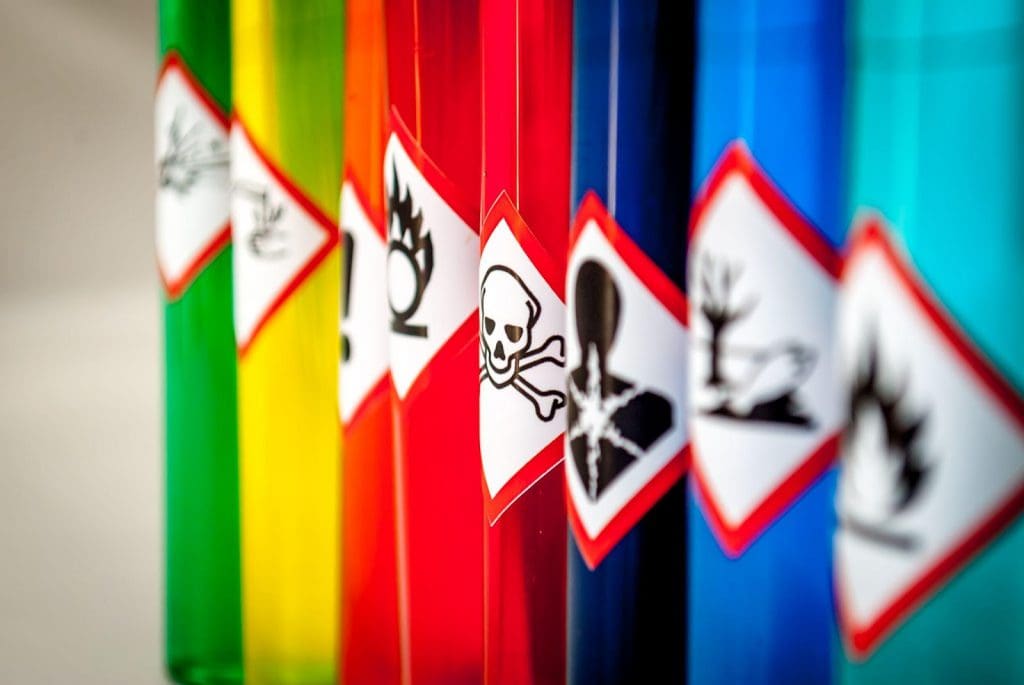
Poison centres notifications (PCNs) are put in place so that in the event of a poisoning incident, emergency response advice can be provided and the potential for further harm or human health risk can be mitigated. These notifications are received by each EU Member State’s Appointed Body, which may be Member State Competent Authority on CLP (MSCA), a poison centre, a National Health Authority, or another organisation that can provide directions in the event of poisoning.

In addition to enforcing classification and labelling regulation, and monitoring substances of very high concern, the European Chemicals Agency (ECHA) is the primary agency to oversee PCNs for products with intention to be sold on the EU market, which may cause harm to human health.
Up until 2017, poison centres notifications had to be submitted from downstream users—that is to say formulators based in the EU—and importers directly to EU Member States. State poison centres would each have their own submission requirements and information formats, and this required significant amounts of work for companies to remain compliant to all market states. Annex VIII to CLP was adopted in 2017 to harmonise the format of poison centres notifications and alleviate this administrative burden. PCNs can now be centrally submitted and distributed through ECHA’s online portal.
Article 45 of the CLP Regulation requires companies placing hazardous mixtures on the EU market to provide specific information about hazardous mixtures to the national poison centres. This has also ratified a harmonised PCN submission format, for which the responsibility of submission lies with the EU legal entity.
Any substance or mixture that is classified as hazardous to human health or able to cause physical harm is required to be notified to ECHA before it can be placed on the market in any EU member state.

Additionally, biocidal products and plant protection products that are hazardous to human health are within the scope of this obligation. The information submission requirements for these products apply in addition to other obligations under the Biocidal Products Regulation and Plant Protection Products Regulation.
Exemptions to PCN requirements include substances and mixtures which are only considered hazardous only to the environment, radioactive and explosive mixtures, mixtures used in scientific research and development, mixtures subject to customs supervision, and mixtures classified as medicinal, cosmetic, or veterinary products.
Downstream users and importers who place hazardous mixtures on the EU market have a responsibility to provide specific information about their mixtures to appointed bodies. Manufacturers within the EU whose products are solely destined for export are not required to notify EU poison centres.
For products which are already on the market, prior notifications will remain valid until 1 January 2025, or until changes are made to the product. If your product requires a submission update as a result of changes, it must be made in the new harmonised format. If the product remains unchanged until 1 January 2025, you must nevertheless make a new submission in the harmonised format. If your product is discontinued before the end of the transition period, no submission is required.

For all new products not yet notified under national legislation, or for updated products, you must submit the required information before you place the mixture on the market. The date of applicability depends on the use type, i.e. the end user, of the mixture:
Stepwise directions on how to submit poison centres notifications can be found in our webinar on this same topic.
In brief, however, you can submit notifications via the ECHA Poisons Centres website, which will guide you how to submit in the harmonised format. Submissions are received as XML files in the IUCLID format, which can be created via ECHA Cloud Services, or from your IUCLID 6 offline application. ECHA also offers automated system-to-system services, which can allow Chemwatch clients to prepare and submit notifications directly within the Chemwatch system.
The PCN format is updated annually, in line with the IUCLID release schedule. Once the IUCLID file is complete, you can generate a dossier on the ECHA portal and submit your notification.
At Chemwatch, we manage our own comprehensive regulatory and chemical database, informed by over 30 years of chemical expertise—and we are well equipped to help you with mandatory reporting. We also have a library of past webinars covering global safety regulations, software training, accredited courses, and labelling requirements. Keep an eye on our Webinar calendar for upcoming Webinars, Mini Briefs and ChemXpress training videos.
Sources: